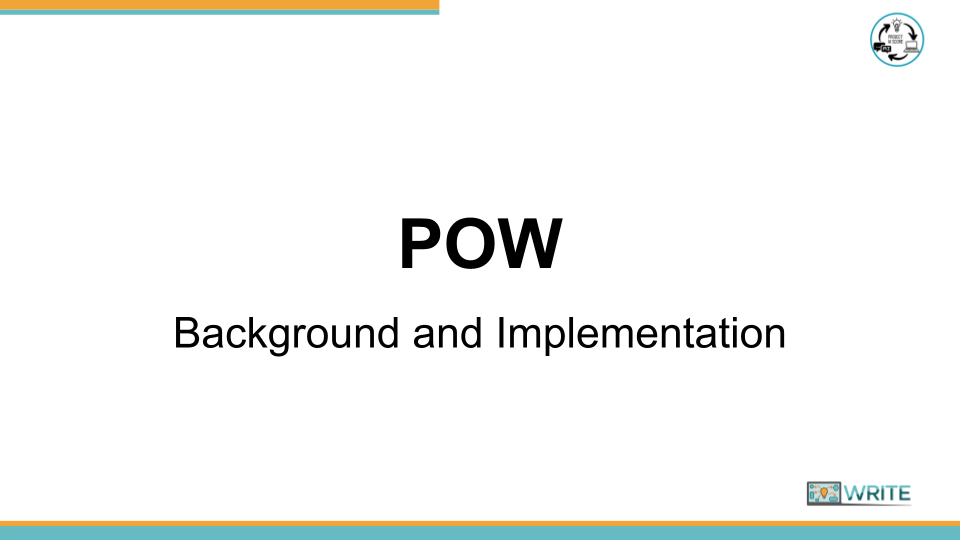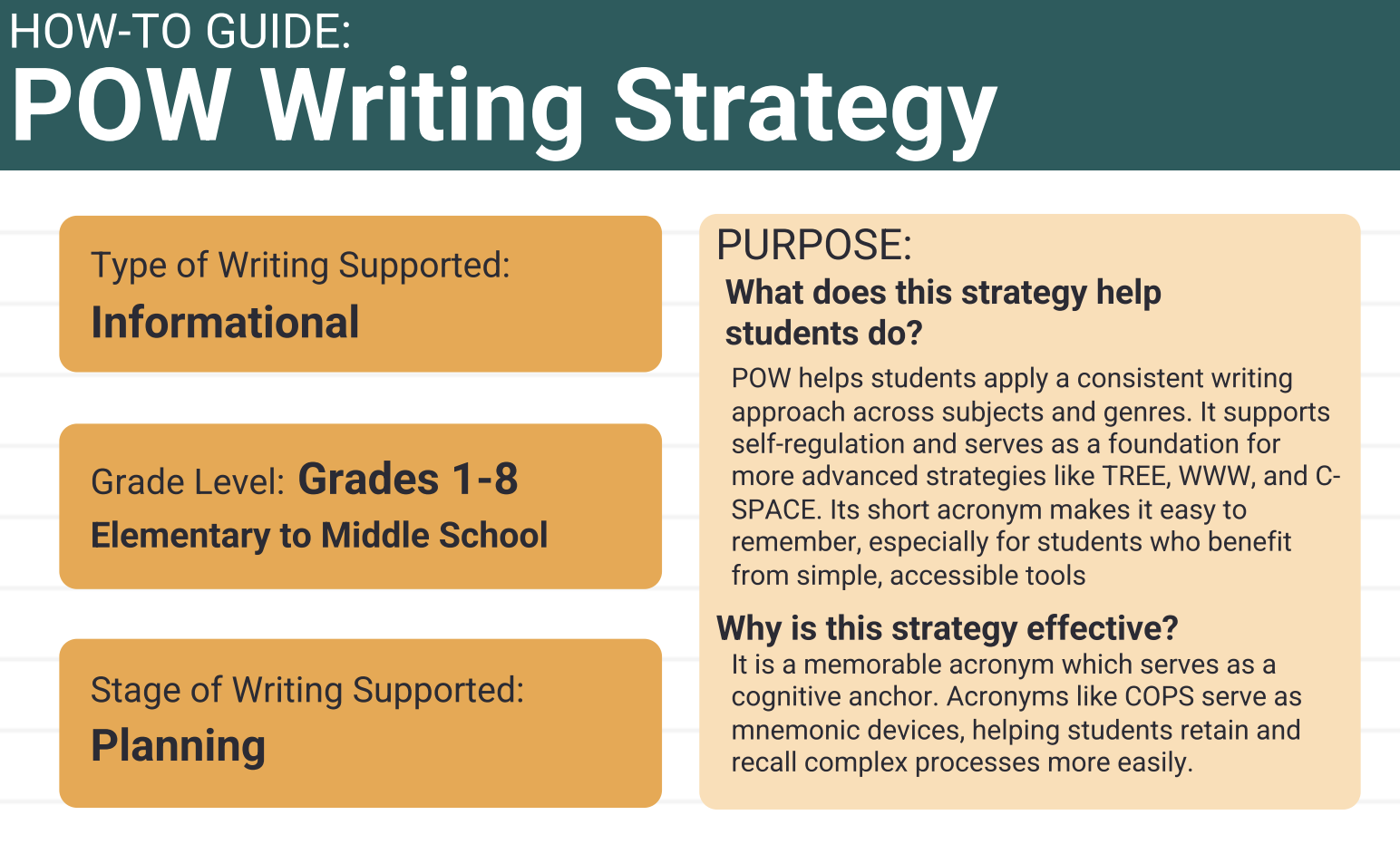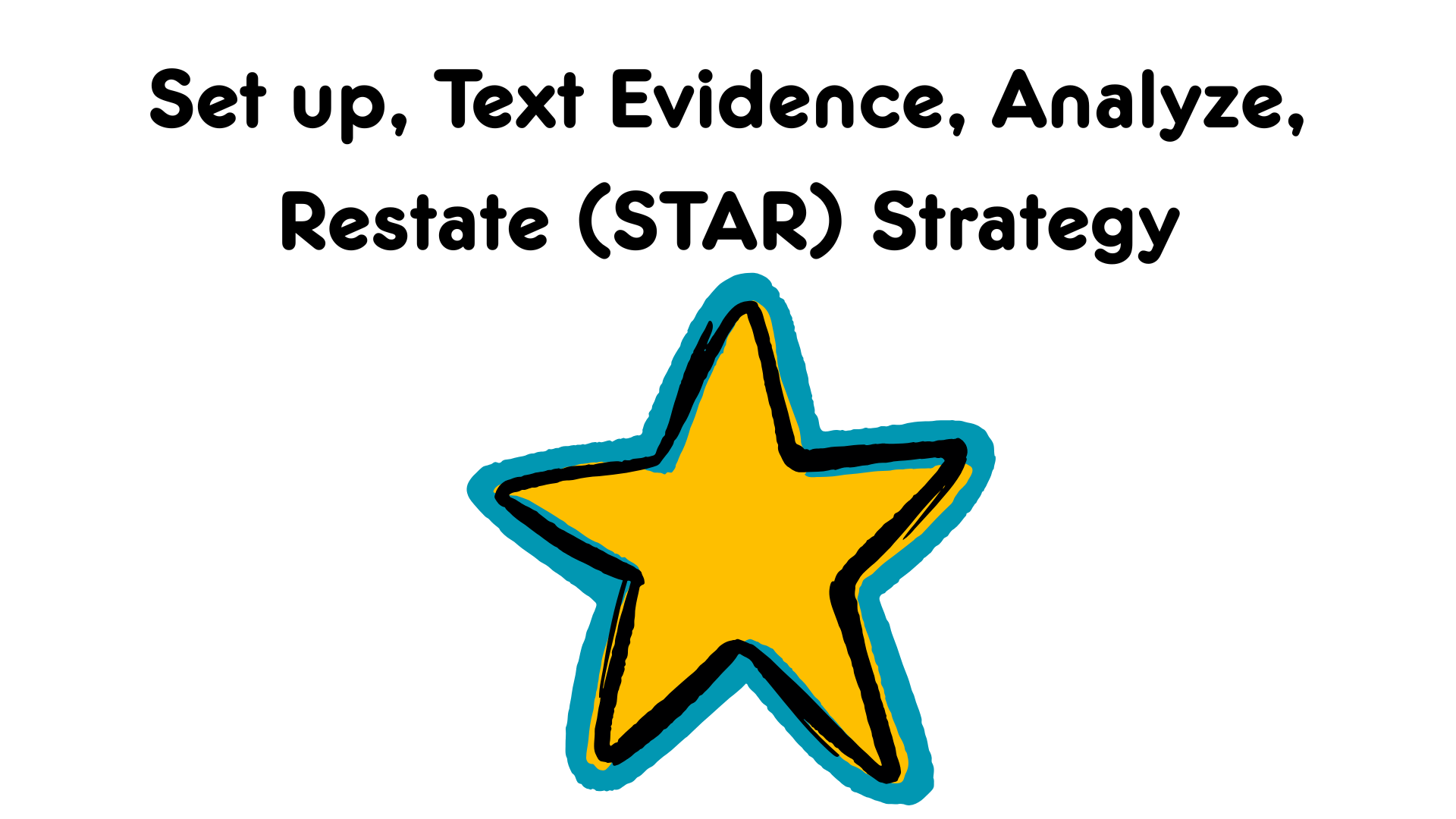Pick My Ideas, Organize My Notes, Write and Say More (POW) Strategy
Strategy Parameters
- Genre: Informational
- Grade Level: All grade levels
- Writing Process: Planning
At-A-Glance
POW is a foundational Self Regulated Strategy Development (SRSD) strategy designed to help students plan and organize their thoughts before drafting a piece of writing. It is a simple, flexible tool that reduces cognitive load, making it suitable for a wide range of learners and appropriate for use across various content areas and genres. The strategy supports idea generation and organization, serving as a reliable starting point for more complex writing tasks.
Learn More
Best Practices
-
Do explicitly teach each step of POW.
-
Do use visual aids and anchor charts to reinforce the steps.
-
Do model your thinking aloud to demonstrate the internal process.
-
Do connect POW to genre-specific strategies.
-
Do encourage elaboration and provide structured graphic organizers for note-taking.
Common Pitfalls
-
Don’t assume students understand the steps without initial and ongoing modeling.
-
Don’t skip the planning phase, as the strategy is primarily focused on pre-drafting organization.
-
Don’t treat POW as a one-time lesson; it requires repeated practice for internalization.
-
Don’t focus only on the final writing product; emphasize the effort and effective use of the strategy.
-
Don’t overlook the importance of modeling self-talk or integrating self-regulation techniques.
Implementation Tips
-
Activate Knowledge and Model: Begin by activating students’ background knowledge through a class discussion about what makes writing interesting, and then display the POW acronym. Model the strategy using a familiar topic, thinking aloud as you brainstorm and organize ideas for each step.
-
Guided Practice with Supports: Start with a shared writing prompt and guide the entire class through each step of the POW process, helping them brainstorm and organize their notes using a graphic organizer. Use structured techniques like think-pair-share to facilitate idea generation and provide support during early practice.
-
Check for Understanding and Apply: Share strong student examples to highlight effective use of the strategy and assign independent writing tasks with new prompts. Circulate to offer feedback and remind students to actively apply POW before and during their writing.
-
Reflection and Integration: Conclude the activity with a short student reflection on how the strategy helped improve their writing or organization. This helps students internalize the process and prepares them to use the versatile tool across content areas and for more complex writing strategies.







